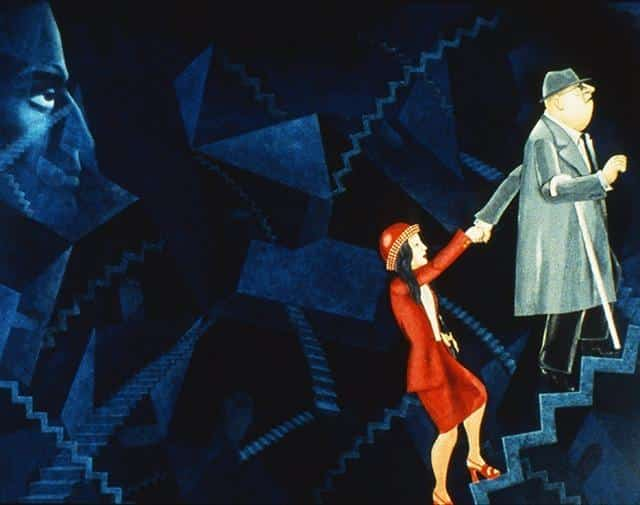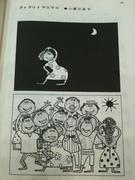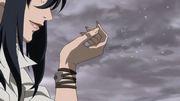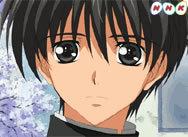A thorough analysis of the emotion and appeal of "Travel"! Anime review

"Travel" - Kihachiro Kawamoto's world of Zen and fantasy■ Public MediaIndependent Production ■ Original MediaAnime Original ■ Release dateOctober 15, 1973 - January 1, 0000 ■Frequencies12 mins ■Original StoryOriginal author: Kihachiro Kawamoto ■ Director・Direction: Kihachiro Kawamoto ■ ProductionProduced by Kihachiro Kawamoto ■ Storydetail "Mountain Lu is smoke and rain, Zhejiang River is tide. If I don't reach there, I can't erase my thousand grudges. If I reach there and come back, it's all good. Mountain Lu is smoke and rain, Zhejiang River is tide." The author of this poem, which appears at the beginning and end of the work, is said to be Su Dongpo (1036-1101), a great poet representing the Northern Song Dynasty of China. If you don't go to see the wonderful scenery of Lushan's smoke and rain, Zhejiang River's tide, you will regret it. By going and seeing it, you have changed. However, even if you come back and look around, the world will not change at all. Kawamoto is devoted to Zen, read many books, and says that he created works based on Zen philosophy with his own interpretation. He became interested in Zen after reading Suzuki Daisetsu's "Zen Studies" (1916). The root of "travel" is <suffering>, and <suffering> arises from <attachment>. In this work, Kawamoto expresses suffering through the likeness of a woman's daydream-like journey. ■ExplanationdetailThe film begins with a black-and-white still photograph of a city lined with buildings. Next, a woman waits for a train in the crowds at a station. As she gets on the train, she looks up and sees a hanging advertisement for a travel agency that reads DISCOVER OUR WORLD. After a poem by Su Dongpo overlaps with the woman's photograph, the screen changes to a paper-cut animation of hand-drawn pictures, inviting her on the journey with an airplane. In a long corridor lined with marble torsos, the woman meets a blind man. She climbs and descends a maze of stairs many times to reach the tower. An Escher-like optical illusion creates multiple heavens and earths, verticals and falls, on one screen. In this seemingly disconnected world, the woman is always searching for something. It is the figure of a man who appears and disappears like an illusion, and the woman suffers from repeatedly finding, acquiring, and losing the man. Eventually, the man appears as a young Indian man, smiles at the woman, and walks away. His figure becomes a monk in yellow robes, and the woman, left behind, turns to stone in despair. The woman sits in the center of the mandala, and as the plane leaves the scene, stills of the city crowd and Su Dongpo's poem are displayed again. ■ Main staffdetail・Screenplay/Kihachiro Kawamoto・Direction/Kihachiro Kawamoto・Animation/Kihachiro Kawamoto, Yutaka Mimai, Yasukazu Araki・Art/Takashi Komae, Masami Tokuyama・Cinematography/Ken Yoshioka, Minoru Tamura・Still photography/Nobuko Tanaka・Model/Sanae Tajima・Sound effects/Iwao Takahashi・Sound recording/Isamu Katto・Editing/Fusako Morizui・Cooperation/Toju Udagawa, Hiromi Wakasa, Koji Maruyama, Ryo Nakagawa, Echo Studio・Production/Kihachiro Kawamoto ■ ReviewKihachiro Kawamoto's "Journey" is an independent animated film released in 1973, known for its unique style and profound theme. Based on Zen philosophy and influenced by Viennese fantasy painting, the film fuses visual beauty with spiritual exploration. "Journey" tells the story of a woman's journey from the city to a fantastical world. She encounters various symbols and symbolic beings, crossing the boundary between reality and dreams. Su Dongpo's poem, which appears at the beginning and end of the work, symbolizes the theme of travel and leaves a deep impression on the viewer. The poem shows the importance of seeing beautiful scenery and the inner transformation it brings. However, even after returning from the journey, the world around us remains unchanged. This reflects the concepts of "suffering" and "attachment" that Kawamoto expressed through Zen thought. Kawamoto is deeply devoted to Zen philosophy, having been drawn to it since reading Suzuki Daisetsu's "Zen Studies." In "Journey," she portrays the Buddhist idea that "suffering" arises from "attachment" through the medium of a woman's journey. She pursues a man who appears and disappears like an illusion, suffering along the way. The man is a symbol of her inner quest, eventually appearing as a yellow-robed monk, suggesting the path to the enlightenment she seeks. The visual influence of the work is strong, being influenced by Vienna Fantasy Painting, a style that uses vivid colors and minute detail to depict fantastical worlds born from war and childhood memories. Kawamoto recreates this style through a unique technique of paper-cutting animation, maximizing the visual impact. In particular, the scenes that use Escher-esque optical illusions skillfully combine visual illusion with spiritual exploration. "Journey," like other works by Kihachiro Kawamoto, demonstrates his talent as a puppet animator. However, this work employs paper-cutting animation, which stands out for its delicacy and beauty. In addition to Kawamoto himself, other talented staff members such as Yutaka Miyone and Yasukazu Araki participated in the animation production, and their skills and artistry support the work. In addition, experts in various fields such as art, photography, and sound effects worked together to complete the work. ■Recommendation"Journey" is a work of visual beauty and profound themes, and is highly recommended for anyone interested in animation and art. Anyone interested in Zen philosophy and Buddhist themes will also find this work thought-provoking. Fans of Viennese fantasy painting and surrealism will find Kawamoto's unique style of expression to offer a new perspective. When viewing this work, please pay attention to the following:
"Journey" is a masterpiece that brings together Kihachiro Kawamoto's artistry and philosophical qualities, and is a work that will deeply move and inspire viewers. Please give it a watch. |
Recommend
Don Yakuza Suikoden Raging Waves: In-Depth Review and Recommended Points
"Don: The Yakuza Suikoden: Raging Storm"...
The broadcast time of "The Witcher" TV series is announced and it is confirmed that there will be a dragon-slaying scene
Netflix Chief Content Officer Ted Sarandos announ...
Oda Cinnamon Nobunaga: Appreciating the unique blend of history and cats
"Oda Cinnamon Nobunaga": A unique anime...
Oda Eiichiro's latest interview: He doesn't believe genius is the result of hard work
Oda, who usually dislikes showing up in social oc...
Leto's Joker will appear in the director's cut of Justice League
According to foreign media Hollywood Reporter, Ja...
The third season of "A Certain Scientific Railgun" will be broadcast in January next year
Today (September 26), the official website of &qu...
The appeal and evaluation of "Kopihan": The world of anime seen from a new perspective
Kopihan - A divine story set in the future of Tok...
The appeal and reviews of "ZOE 2167 IDOLO": The pinnacle of mecha action
ZOE 2167 IDOLO - Zone of the Enders 2167 IDOLO ■ ...
A former hero candidate who was a cheat from level 2 and now lives a relaxed life in another world - A fantasy set in another world with a perfect balance of healing and adventure
A former hero candidate who was a cheat from leve...
The second Japanese manga artist in history! Rumiko Takahashi won the Angoulême International Comics Festival's Best Award
The 46th Angoulême International Comics Festival,...
The appeal and reviews of "Sansha Sanyou OVA": A special episode that fans must see
"Sansha Sanyou OVA": The charm of a sho...
The appeal and evaluation of "Koedo Shigoto! The ANIMATION take .2"
"Koedo Shigoto! The ANIMATION take .2" ...
Himouto! Umaru-chan OVA's appeal and reviews - Finding hidden masterpieces
The appeal and detailed review of "Himouto! ...
Yozakura Quartet: Exploring the Depths of Enchanting Music and Storytelling
The appeal and reputation of Yozakura Quartet Yoz...
"Game of Thrones" spin-off "House of the Dragon" first released the preview trailer
The first spin-off series of "Game of Throne...









